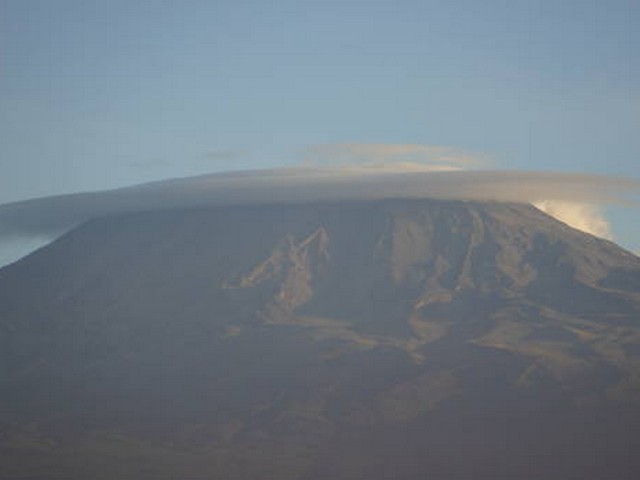How To Deal With Weather Changes On Kilimanjaro
Mount Kilimanjaro, the iconic beacon of Tanzania, stands as the tallest peak in Africa. Its majestic presence invites adventurers from around the globe to conquer its heights and witness the breathtaking views from above the clouds. But climbing Kilimanjaro is not just a physical challenge; it’s also a dance with the mountain’s ever-changing weather patterns. Understanding how to adapt to these changes is crucial for a successful ascent, and that’s where we, at Kilimanjaro Centre for Trekking and Ecotourism (KCTE), come into play. Today, let’s embark on a journey through the clouds, learning how to master the mountain’s moods and ensuring your trek is nothing short of spectacular.
Embracing the Mountain’s Moods: Weather Dynamics of Kilimanjaro
Kilimanjaro is not just a mountain; it’s a myriad of ecological systems, each with its own climate. From the rainy foothills to the arctic summit, weather patterns can shift rapidly. Understanding these dynamics is the first step to adapting effectively.
The Rainforest Base: A Wet Welcome
The journey begins in the lush rainforests that girdle Kilimanjaro’s lower slopes. Humidity here is high, and rainfall is frequent. While this might sound daunting, the rain brings life, turning the landscape into a vibrant tapestry of green hues. Waterproof gear and a positive mindset here are your best allies.
Heath and Moorland: The Windy Middle
As you ascend, forests give way to heath and moorland. The air thins, temperatures drop, and the landscape opens up to vast grasslands. Here, the challenge is the wind—sometimes soothing, sometimes fierce. Layered clothing becomes essential, allowing flexibility and adjustment as conditions change.
Alpine Desert: Sun, Wind, and Cold
Above 4,000 meters, the terrain transforms into what resembles a lunar landscape. The alpine desert is harsh; sunny days may turn into frigid nights quickly. Sun protection is as crucial as your warmest parka. Here, your packing list must balance between shielding you from sun exposure and preparing you for nighttime chills.
The Summit: The Arctic Zone
Reaching the summit of Kilimanjaro feels like stepping into another realm. The air is thin, and temperatures can plummet to below freezing. It’s vital to be prepared with thermal layers, insulated gloves, and hats. But remember, the cold is temporary, and the sunrise from Uhuru Peak is unparalleled.
Gear Up: Essential Equipment for Every Climate Zone
Equipping yourself appropriately for each climate zone is key to a comfortable climb. At KCTE, we emphasize the importance of quality gear.
- Waterproof Clothing: Essential for the rainforest and unexpected showers.
- Breathable Layers: Facilitate adjustment to varying temperatures.
- Sun Protection: Hats, sunglasses, and sunscreen are non-negotiable.
- Insulation: High-quality down jackets for the freezing summit push.
- Sturdy Footwear: Waterproof, supportive boots are a must-have.
Remember, while we provide comprehensive gear lists, personal comfort with your equipment is crucial. Test and adjust your gear during training hikes to avoid surprises on the mountain.
Staying Healthy and Energized: Nutrition and Hydration
The right fuel and ample hydration can make or break your Kilimanjaro experience. As you tackle different climate zones, your body will require more energy, and staying hydrated is vital, especially at higher altitudes where dehydration is a common challenge.
- Hydration: Aim for 3-4 liters of water per day. Electrolyte supplements can be a game-changer.
- Nutrition: High-energy, easily digestible foods are best. Think complex carbohydrates, proteins, and fats. Our KCTE chefs specialize in crafting meals that meet these needs and are adaptable to individual dietary requirements.
Acclimatization: The Slow and Steady Winning Strategy
The secret to a successful summit is acclimatization. Kilimanjaro’s varying elevations can cause altitude sickness if ascended too quickly. Our itineraries are designed to allow your body to adjust to altitude gradually, increasing your chance of a successful summit.
- Pole Pole (Slowly, Slowly): This Swahili phrase is the mantra for climbing Kilimanjaro. Patience is not just a virtue; it’s a necessity.
FAQs: Weather on Kilimanjaro
Q1: What is the best time of year to climb Kilimanjaro?
The best times are during the dry seasons: January to mid-March and June to October. However, Kilimanjaro is a year-round adventure, so choose what fits your schedule.
Q2: How can I best prepare for the cold at the summit?
Invest in high-quality thermal layers, practice wearing them during cold mornings or evenings at home, and ensure you are comfortable moving in them.
Q3: Are rains on the mountain continuous all day during the wet season?
Rain typically falls in the late afternoon or evening, though morning showers are also possible. The forest zone is where you’ll experience the most rain.
Ready to Conquer Kilimanjaro?
Weather on Mount Kilimanjaro can be as challenging as it is changeable, but with the right preparation and mindset, you can enjoy every step of the journey. At Kilimanjaro Centre for Trekking and Ecotourism (KCTE), we are committed to providing you with an experience that is safe, memorable, and deeply fulfilling. Book your Kilimanjaro climbing adventure with us today, and stand atop Africa, mastering not only the mountain but its many moods.




